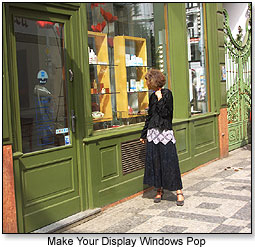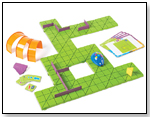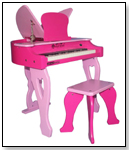|
|
18 Tips on Creating Killer Retail Window Displays Make a lasting first impression with proper visual merchandisingVisual Merchandising is something many retailers feel challenged by. What to put in the store window? What to put with it? How much merchandise should be in the window? These are great questions to ask yourself. After all, your window is your brand. Your store windows are the first point of contact people have with your store, and after seeing them, customers should walk in your doors. While there are similarities to visually merchandising your in-store displays, store windows seem to be the bastard children of most retailers. Forgotten, alone, filled with odds and ends…and littered with dead flies. This is a serious oversight, because proper window display techniques can make you a destination on your Main Street, in your shopping mall, and in your town.  With that said, here are the 18 Tips for Visually Merchandising Retail Store Windows 1. Plan one month in advance. A killer retail window display takes time to create. 2. Create a theme. Whether it is a season, type of product, or a color, a theme helps unify. 3. Put in a setting. A beach, bedroom, picnic or other setting helps engage the viewers’ imagination. 4. Choose props to help frame your display. A few select pieces you buy or make can help draw attention. 5. Feature only a few key pieces of merchandise. A window is for the items that might not sell as easily on a shelf as others. 6. Find one focal piece that "pops" – probably a higher price point. Again, it should be colorful or have a bold pattern to attract interest. 7. Have multiple level of height. Just like in a good store display, you want the customer to discover various items in your killer window. 8. Keep your display at eye level for passersby. View your window display at all angles, including from a passing car. 9. Leave a visual portal into your store. Don’t block off the entire view into your store —the people inside will attract the people outside. 10. Limit your palette. Just like too many patterns on a person is distracting, so are too many colors in your window. Focus! 11. Use at least three colors. While an all white window might seem chic to you, it won’t draw interest like adding a bit of red and black. 12. Include faces of customers — accompanying their testimonials, holding your items in their hands — any way you can add interest with actual customers is a plus. 13. Feature customer wants. Your higher ticket items that might not sell as quickly garner more interest than what customers need. 14. Clean it. Thoroughly clean the inside, outside and floor of your display windows prior to installation 15. Avoid SALE! SALE! SALE! SALE! 'Nuff said. Check out this retailer’s holiday window pictures for inspiration 16. Avoid holidays in the middle of the month. Unless it’s month long, your windows can be outdated and make you look out of touch. If you will change them the day after, OK. 17. Don’t overfill. Your windows are not your stockroom. Use them to highlight your best, not as an end cap. 18. Change monthly. Just like your in-store displays, they have a shelf life. Keep your windows changed to keep customers (and yourself) engaged. One more thing... Remember you don’t want your sidewalk to be dirty, your planters filled with dead (or dying) plants or other garbage in front of the display windows you’ve spent so much time assembling. Just like a great display, when you visually merchandise your store windows properly you’ll sell more and entice customers to come in and explore all you have to offer. The best retailers still spend time on their retail store windows because it is the one place they can make a busy, time-crunched consumer consider their premium goods.  Writer's Bio: Bob Phibbs is the Retail Doctor®, a best-selling author and speaker who has helped thousands of independent businesses compete. His new book, The Retail Doctor’s Guide to Growing Your Business has received praise from both Inc. magazine and USA Today and can be found at your local bookstore or ordered at http://www.retaildoc.com/guide. He and his work have been featured in the New York Times, the Wall Street Journal and Entrepreneur magazine. Questions? Contact Bob at info@retaildoc.com. This article was reprinted with permission of the author, Bob Phibbs, aka The Retail Doctor®. Read more articles by this author Writer's Bio: Bob Phibbs is the Retail Doctor®, a best-selling author and speaker who has helped thousands of independent businesses compete. His new book, The Retail Doctor’s Guide to Growing Your Business has received praise from both Inc. magazine and USA Today and can be found at your local bookstore or ordered at http://www.retaildoc.com/guide. He and his work have been featured in the New York Times, the Wall Street Journal and Entrepreneur magazine. Questions? Contact Bob at info@retaildoc.com. This article was reprinted with permission of the author, Bob Phibbs, aka The Retail Doctor®. Read more articles by this author |
| ||||||||||||||||||||||||||||||||
Disclaimer Privacy Policy Career Opportunities
Use of this site constitutes acceptance of our Terms of Use.
© Copyright 2025 PlayZak®, a division of ToyDirectory.com®, Inc.



